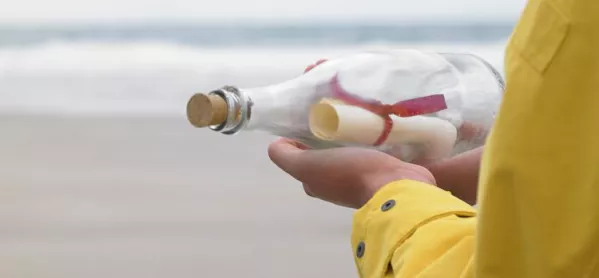Funding cuts to mental health services have made thresholds for treatment so high that young people are risking their lives in desperate bids to get help, Tes can reveal.
Stretched children and adolescent mental health services (Camhs) are driving growing numbers of pupils to make what look like suicide attempts just so they can have their mental illness treated.
Rebecca Beatty*, head of a secondary in south-west England, said that three pupils in her school alone have made apparent suicide attempts to ensure that they would be seen by Camhs professionals.
In one case, Ms Beatty was alerted that one of her pupils had attempted suicide, and was in hospital. When she saw the girl several days later, she asked: “How were you feeling at the time?”
“Pretty awful,” the girl replied, but then revealed the overdose had not been an attempt to kill herself. The pupil told the head that it was the step she realised she needed to take in order to be seen by Camhs.
Referring to her pupils’ apparent suicide attempts, Ms Beatty said: “I don’t think there’s anyone who genuinely wanted to end it all. They wanted to get help, and the only way they could explain that was through their actions.
“It wasn’t that people weren’t listening to them - people had put in referrals to Camhs. But the threshold for getting some kind of help is very difficult. Camhs can only deal with the most acute cases.”
Papyrus, the teen-suicide prevention charity, said it is common for its helpline advisers to hear from pupils who feel that they have to express suicidal intentions - or make suicide attempts - in order to be seen by Camhs.
“People either can’t access Camhs or aren’t getting enough from them,” said Heather Dickinson, who works for the charity.
“Sometimes young people who feel that they’re not taken as seriously by Camhs as they might be - they feel that they’re expressing how they feel, and that’s not being picked up enough. So they will escalate their behaviours.”
Cries for help
Ms Dickinson said she had seen a dramatic increase in the number of calls and text messages the charity receives from teenagers expressing suicidal thoughts following their inability to access Camhs.
“Young people are feeling quite desperate,” she said. “They’re saying, ‘I’ve taken steps to make a suicide attempt, to let people know how bad I’m feeling.’”
But Ms Dickinson said that even pupils’ apparent attempts to kill themselves do not guarantee that they will be seen by Camhs.
“We’ve had lots of concerned parents calling us, saying that young people have made suicide attempts, and sometimes are coming home from hospital and they still can’t get access to Camhs,” she said.
A survey conducted by the Office of the Children’s Commissioner showed that, of all pupils referred to Camhs in 2015 (the latest figures available), only 14 per cent were able to access the service immediately.
Meanwhile, 28 per cent of those referred were not allocated a service at all. In some areas, this figure was as high as 75 per cent.
A Conservative Party spokesman said: “The prime minister has described any lack of mental health support as a burning injustice - and we have an ambitious programme of reform to improve care.
“We’re putting £1.4 billion more into children’s mental health services and establishing the first waiting time standards for treatment. Our manifesto commits to better, more responsive Camhs treatment. If elected, this will be an urgent priority.”
*The headteacher’s name has been changed to protect her pupils
This is an edited article from the 2 June edition of Tes. Subscribers can read the full article here. To subscribe, click here. This week’s Tes magazine is available in all good newsagents. To download the digital edition, Android users can click here and iOS users can click here




